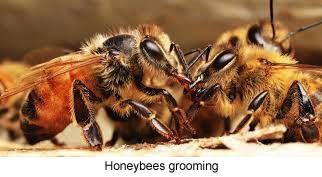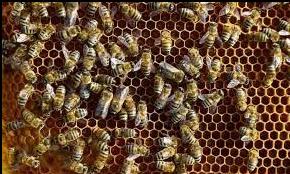 In a November 27th article The Economist reported on research conducted in Italy on the measures taken by honeybees to prevent infestation of hives with Varroa destructor, a parasitic mite. Forager female bees that become infected with a Varroa mite perform their wiggle dance, used to indicate the position of food to other foragers in the hive away from the vulnerable core area of the hive where larva mature. In addition allogrooming to remove debris and parasites is conducted in a remote area away from the nursery and food stores, and mainly at the entrance of the hive. Practicing a primitive form of innate biosecurity represents a cost to the hive as the efficiency of food gathering is negatively impacted by limiting the areas for wiggle dancing and allogrooming.
In a November 27th article The Economist reported on research conducted in Italy on the measures taken by honeybees to prevent infestation of hives with Varroa destructor, a parasitic mite. Forager female bees that become infected with a Varroa mite perform their wiggle dance, used to indicate the position of food to other foragers in the hive away from the vulnerable core area of the hive where larva mature. In addition allogrooming to remove debris and parasites is conducted in a remote area away from the nursery and food stores, and mainly at the entrance of the hive. Practicing a primitive form of innate biosecurity represents a cost to the hive as the efficiency of food gathering is negatively impacted by limiting the areas for wiggle dancing and allogrooming.
 Perhaps even lowly honeybees have lessons for humans who resist social distancing, wearing masks, and common sense precautions to protect against infection or who ignore basic operational biosecurity for farms.
Perhaps even lowly honeybees have lessons for humans who resist social distancing, wearing masks, and common sense precautions to protect against infection or who ignore basic operational biosecurity for farms.